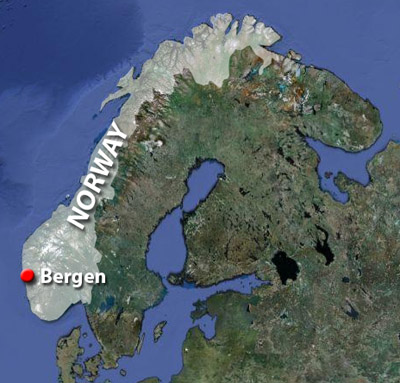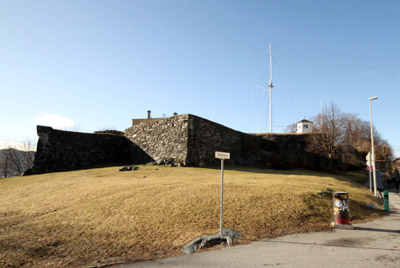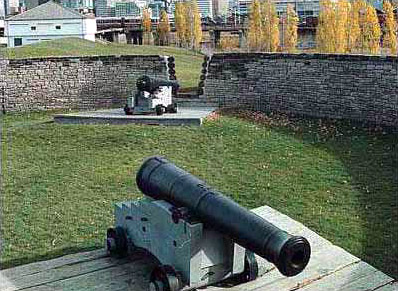 |
Fredriksberg Fortress
Bergen, Norway
|
|
 |
Is this a starfort? Well, it has pointy bastions, but if I saw this shape in the night sky, I'd probably be worried. Still, the judges have decreed that it fulfills the requirements for this site, so here we go.
As of 1030AD, there was a trading settlement at the spot where the city of Bergen lies today. Bergen gradually became Norway's capital city by the beginning of the 13th century (Norway's first royal coronation was held there in 1150), but by the beginning of the 14th century, Oslo had eclipsed Bergen in importance.
Bergen continued to be a big deal with the shipping and export of dried cod, and any coastal city of the era was at risk from ne'er-do-wells in ships. In the Norndes district is the highest point of Bergen, so it naturally became the focus of the city's defense.
|
 |
 |
|
Bergen had been protected by Sverresborg Castle (built around 1185) and Bergenhus (built in the 1240's) prior to Frederiksberg Fortress' construction. Each of these forts were formidable in their own clunky way, but niether were in the least starrish, which, as we all know, is the ultimate shape for defensive success.
In August of 1665, the Dutch East India Company was the richest single company in the world. The Company's trade with the far east in spices, ebony, precious stones and whatever else of value that the far east could produce had been returning enormous dividends to its investors for a great many years, and Britain was, quite naturally, jealous to the point of piracy.
A fleet of 66 Dutch ships, 10 of which were heavily laden with treasures from the far east, sat in Bergen's bay in August of 1665. Though Denmark/Norway was officially allied with the Dutch, the commander of a 22-ship British fleet, Thomas Teddeman (died 1668), sent a representation ashore to convince Bergen's authorities to allow an attack on the Dutch to take place: If Bergen did nothing to intervene, Teddeman proposed to split the booty, half & half.
Oddly, the government of Bergen was having none of it. Teddeman threatened, to no avail. British sailors were sent into Bergen to push people around, a move that backfired, further solidifying the city against cooperation with the wicked British. Finally at 6am on August 2nd, the British fleet attacked. By 10am they were limping away in varying degrees of disrepair, having been roundly trounced by the combined cannonfire of the Dutch fleet and ancient Norwegian forts.
|
 Fredriksberg Fortress, apparently rigged for sails. You can't miss it, it's right there on Galgebakken. Fredriksberg Fortress, apparently rigged for sails. You can't miss it, it's right there on Galgebakken. |
 |
Though the British had been sent on their way, Bergen's authorities realized that they needed a modern fortress to discourage any such foolishness in the future. Dutch engineer and General Henrik Ruse (1624-1679) designed and started Fredriksberg Fortress, working from 1666 to 1667. The fortress was named for King Frederick III of Denmark (1609-1670), who also ruled Norway at the time.
Initial construction petered out after the first two years of activity. A 1695 visit to Bergen by the son of King Christian V of Denmark (1646-1699) got things rolling again, and the fort was finally completed in 1706.
|
|
|
...and was never used for anything actively warlike. Fredriksberg Fortress was used for military storage and had an active garrison for nearly 300 years, but was primarily a prison and convenient place for (no doubt deserving) people to be executed.
|
Built at Bergen's highest point, Fredricksberg Fortress served as a fire watch station from 1667, and as a fire station from 1905 to 1926.
Today, Fredriksberg Fortress is the headquarters of Norndes Battallion, a buekorps. A buekorps is essentially a Boy Scout troop, based on archery and close-order drill. Norndes Battallion, established in 1858, is one of fifteen buekorps in Bergen. These Boys Brigades were widespread throughout Norway in the 19th century, but mostly ceased to exist in the rest of the country by the 20th century.
|
 |
 Gotta keep those Galgebakken roughnecks in their place Gotta keep those Galgebakken roughnecks in their place |
|
|
|
|
|
|
 |




